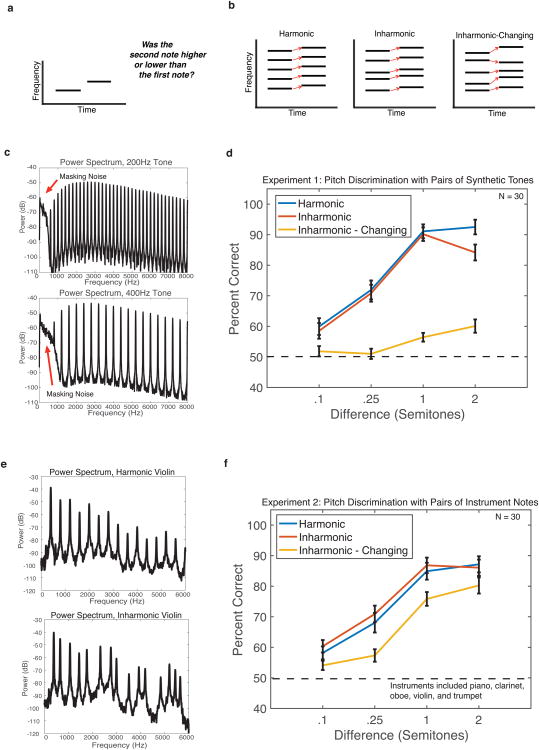Figure 2. Task, example stimuli, and results for Experiments 1 and 2 – pitch discrimination with pairs of synthetic tones and pairs of instrument notes.
(A) Schematic of the trial structure for Experiment 1. During each trial, participants heard two tones and judged whether the second tone was higher or lower than the first tone.
(B) Schematic of the three conditions for Experiment 1. Harmonic trials consisted of two harmonic tones. Inharmonic trials contained two inharmonic tones, where each tone was made inharmonic by the same jitter pattern, such that the frequency ratios between components were preserved. This maintains a correspondence in the spectral pattern between the two tones, as for harmonic notes (indicated by red arrows). For Inharmonic-Changing trials, a different jitter pattern was applied to the harmonics of each tone, eliminating the correspondence in the spectral pattern.
(C) Power spectra of two examples tones from Experiment 1 (with F0s of 200 and 400 Hz, to convey the range of F0s used in the experiment). The fixed bandpass filter applied to each tone is evident in the envelope of the spectrum, as is the low-pass noise added to mask distortion products. The filter was intended to eliminate the spectral centroid or edge as a cue for pitch changes.
(D) Results from Experiment 1. Error bars denote standard error of the mean.
(E) Example power spectra of harmonic and inharmonic violin notes from Experiment 2.
(F) Results from Experiment 2. Error bars denote standard error of the mean.

